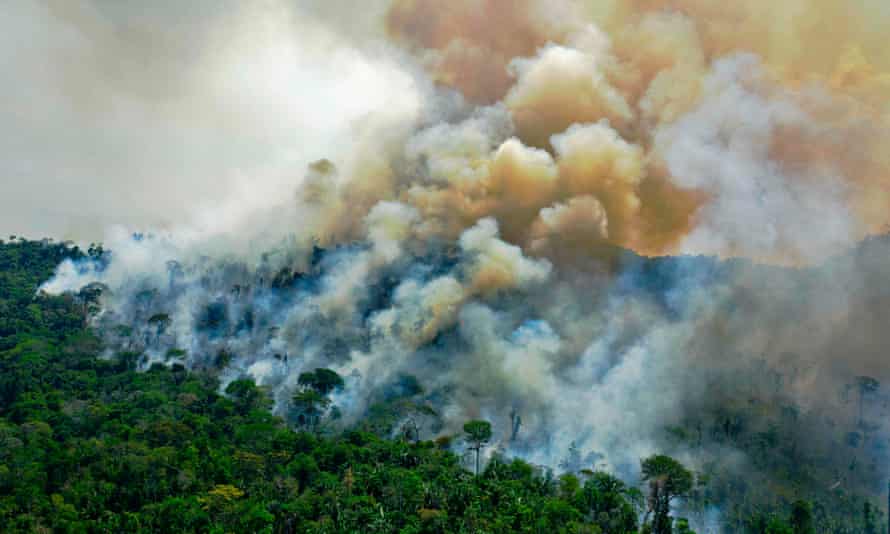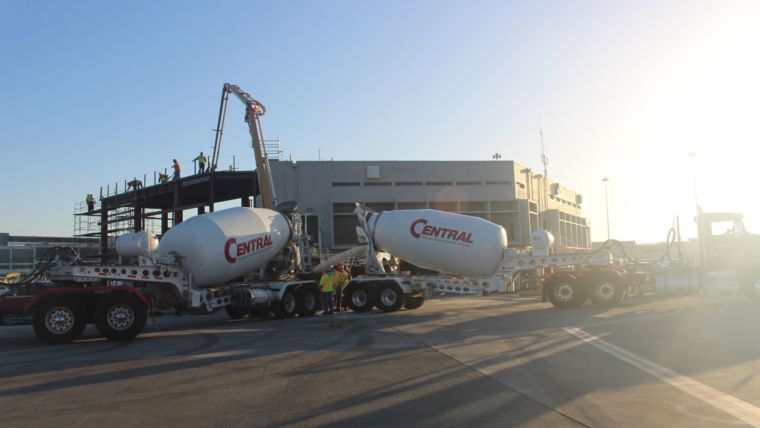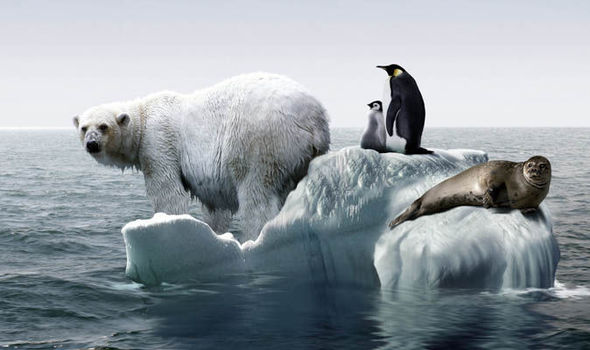Recently, I’ve mostly been writing about what is going to happen to our society as a result of a warmer climate. Real estate, insurance, finance, fossil fuel industry, carbon taxes, transportation (especially cars and trucks), etc.
I decided today to remind everyone why these consequences are all going to happen. Paraphrasing what someone once said, It’s the Climate Stupid. As CO2 and other heat trapping elements like methane continue to build up in our atmosphere the outcomes continue to get more dramatic. The process of reactions is NOT linear. Many factors interact and together accelerate and intensify the outcomes such that they progress at exponential rates.
The featured article today illuminates this point. Those of you who read my articles regularly will recognize many of the items that are mentioned especially regarding the changing salinity of the ocean due to accelerating glacial melt and the impact this will have on the ocean currents particularly the Gulf Stream.
Climate Tipping Points Could Topple Like Dominoes, Warn Scientists
“The new research examined the interactions between ice sheets in West Antarctica, Greenland, the warm Atlantic Gulf Stream and the Amazon rainforest. The scientists…found domino effects in a third of them (models), even when temperature rises were below 2C, the upper limit of the Paris agreement.”
“Ice sheets and ocean currents at risk of climate tipping points can destabilise each other as the world heats up, leading to a domino effect with severe consequences for humanity, according to a risk analysis.”
“An example of the complex chain of interactions the researchers tracked is the melting of the Greenland ice sheet. This releases fresh water into the ocean and slows down the AMOC, which is driven partly by dense, salty water being pulled down towards the ocean floor. A weaker AMOC means less heat is transported from the tropics towards the north pole, which in turn leads to warmer waters in the Southern Ocean. This can then destabilise ice sheets in Antarctica, which pushes up global sea level and causes more melting at the edges of the Greenland ice sheet.”
“The study showed that the interactions between these climate systems can lower the critical temperature thresholds at which each tipping point is passed. It found that ice sheets are potential starting points for tipping cascades, with the Atlantic currents acting as a transmitter and eventually affecting the Amazon.”
“Tipping points occur when global heating pushes temperatures beyond a critical threshold, leading to accelerated and irreversible impacts. Some large ice sheets in Antarctica are thought to already have passed their tipping points, meaning large sea-level rises in coming centuries.”
“The level of CO2 in the atmosphere required to push temperatures beyond the thresholds could be reached in the very near future, she said. “In the next years or decades, we might be committing future generations to really severe consequences.” These could include many metres of sea-level rise from ice melting, affecting scores of coastal cities.
“We’re shifting the odds, and not in our favour – the risk clearly is increasing the more we heat our planet,” said Jonathan Donges, also at PIK and part of the research team.
In May, scientists reported that a significant part of the Greenland ice sheet was on the brink of a tipping point. A 2019 analysis led by Prof Tim Lenton at the University of Exeter suggested the world may already have crossed a series of climate tipping points, resulting in what the researchers called “an existential threat to civilisation”.”
We’ve reached, and are actually beyond, the point where dramatic action must be taken to keep the planet from getting to a point where our current civilization is not sustainable.
To reiterate the dire circumstances in which we find ourselves, consider this additional news.
Giant Glacier Melting Faster, Crumbling into Pieces — Study
Chelsea Harvey, E&E Reporter
June 14, 2021
Antarctica’s monster Pine Island Glacier — one of the fastest melting glaciers on the continent — is giving climate scientists new reasons to worry.
The trouble has to do with its ice shelf, a frozen ledge at the edge of the Pine Island Glacier. The ice shelf helps stabilize and contain the vast flow of ice behind it.
But now it’s crumbling into pieces.
Wildfires Blaze in Siberia, Far East
Associated Press
Monday, June 14, 2021
Russian emergency workers fought wildfires burning yesterday on more than 212 square miles of territory mostly in Siberia and the Far East.
The state agency responsible for fighting forest fires, Avialesookhrana, said the largest blaze was in the far northeast’s Sakha Republic, where 74,000 acres was on fire. The Irkutsk region in Siberia had fires encompassing about 49,500 acres, the agency said.
In recent years, Russia has experienced especially widespread forest fires, which experts blame on unusually dry summers and high temperatures. — Associated Press
The Western Drought Is Bad. Here’s What You Should Know About It.
New York Times
Henry Fountain June 9, 2021
Much of the Western half of the United States is in the grip of a severe drought of historic proportions. Conditions are especially bad in California and the Southwest, but the drought extends into the Pacific Northwest, much of the Intermountain West, and even the Northern Plains.
Drought emergencies have been declared. Farmers and ranchers are suffering. States are facing water cutbacks. Large wildfires burned earlier than usual with more major fires burning in Arizona, New Mexico and other states.
There appears to be little relief in sight.
THE WASHINGTON POST
Despite Pandemic, Level of Carbon Dioxide in the Atmosphere Hits Historic Levels
June 9, 2021
Brad Dennis and Steven Mufson
Scientists from Scripps and the National Oceanic and Atmospheric Administration said on Monday that levels of atmospheric carbon dioxide peaked in May, reaching a monthly average of nearly 419 parts per million.
That represents an increase from the May 2020 mean of 417 parts per million, and it marks the highest level since measurements began 63 years ago at the NOAA observatory in Mauna Loa, Hawaii. Twice in 2021, daily levels recorded at the observatory have exceeded 420 parts per million, researchers said.
Well, have a nice day. I hope I haven’t ruined it. But we’re heading for a train wreck and it’s best you realize it sooner rather than later, before it’s impossible to prevent the worst from happening and giving us a chance to adapt and recover.
Climate Tipping Points Could Topple Like Dominoes, Warn Scientists
Analysis shows significant risk of cascading events even at 2C of heating, with severe long-term effects

A burning area of rainforest reserve in Pará state, Brazil. Much of the Amazon is close to a tipping point at which it becomes savannah, researchers have warned. Photograph: Carl de Souza/AFP/Getty Images
Damian Carrington Environment Editor
June 3, 2021
Ice sheets and ocean currents at risk of climate tipping points can destabilise each other as the world heats up, leading to a domino effect with severe consequences for humanity, according to a risk analysis.
Tipping points occur when global heating pushes temperatures beyond a critical threshold, leading to accelerated and irreversible impacts. Some large ice sheets in Antarctica are thought to already have passed their tipping points, meaning large sea-level rises in coming centuries.
The new research examined the interactions between ice sheets in West Antarctica, Greenland, the warm Atlantic Gulf Stream and the Amazon rainforest. The scientists carried out 3m computer simulations and found domino effects in a third of them, even when temperature rises were below 2C, the upper limit of the Paris agreement.



